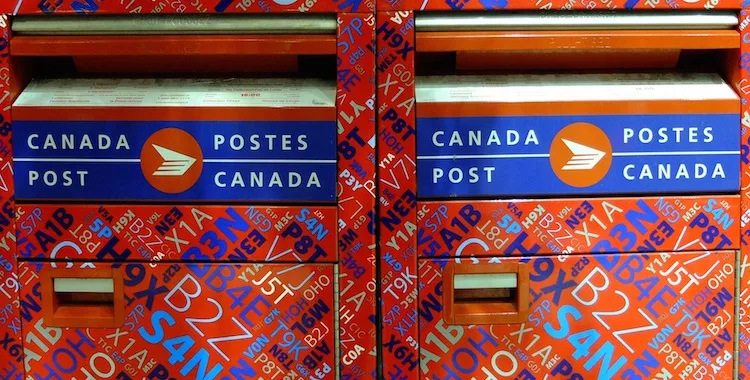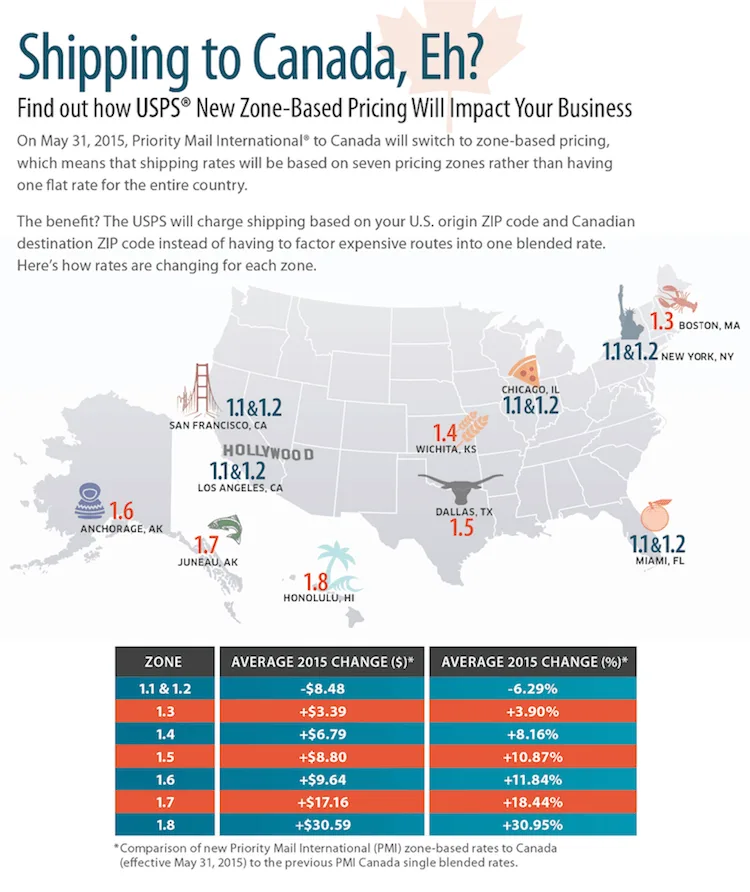Want to Sell Online to Canada? Four Things Your U.S. Business Needs to Know

International selling is one of the best ways online businesses in the U.S. can increase revenue and grow their customer base to take advantage of the tremendous growth opportunity of cross-border ecommerce. While many global markets look appealing, one of the most popular destinations for international trade continues to be the U.S.’s neighbor to the north – Canada.
Canada’s closeness to the U.S. makes it a perfect stepping stone into global commerce. It also doesn’t hurt that Canadians have a penchant for buying from U.S. brands.
But before you expand to any new market, it’s important to understand its particular tastes. With this in mind, here are four things you should know about Canada to help you sell more online and expand your brand internationally.
Mobile Usage is Big
According to Comscore, 49% of the time Canadians spend online is via a mobile device. While the majority of this time is spent on instant messaging, games and social media, retail activities and purchases are steadily growing.
49% of the time Canadians spend online is via a mobile device.
For this reason, online businesses should consider a mobile strategy when penetrating the Canadian market. Make sure your website is optimized for mobile browsing across different devices and has a responsive web design that allows for ease of purchase.
In addition, Google recently adjusted its algorithm to reward mobile-friendly websites with higher search rankings, so making this change will help you increase your SEO rankings overall.
Amazon is Fueling Ecommerce
Ecommerce in Canada is getting a large boost from Amazon.ca, which claims 7% of Canadian ecommerce sales. The retail giant attracts roughly five million Canadian shoppers to its website every month and is expected to triple or quadruple revenue over the coming years.
So how can U.S. retailers use Amazon to their advantage in Canada? The same way they make use of it in the U.S. – by registering to sell to Canada on its marketplace.
Amazon.ca accounts for 7% of Canadian ecommerce sales.
The process is similar to selling on the U.S. version of the site, and Amazon will even provide a currency converter tool so you can easily manage the transfer of international funds.
Returns are a High Priority
According to Misko Kancko, director of international strategy for Canada Post, lack of a clear returns policy accounts for 34% of abandoned shopping carts by Canadian merchants. Returns should never be a reason to miss out on potential sales, so take the time to communicate with your Canadian customers and let them know their options. Spell out details such as what can and can’t be returned, the timeframe for returns and the cost of shipping.
Lack of a clear returns policy accounts for 34% of abandoned shopping carts by Canadian merchants.
Like most shoppers, Canadians value convenience – after all, there’s nothing worse than having to fill out export documents for a return. There are software solutions available which allow businesses to create Canada Post return labels that can be emailed to customers directly. It streamlines the process of returns so customers can simply attach the label to their package and drop it off at their local Post Office.
Recent USPS Price Change Focuses on Canada
On May 31, the U.S. Postal Service® switched to zone-based pricing for Priority Mail International® shipments heading to Canada. This means shipping rates are now determined by the U.S. origin ZIP code and Canadian destination postal code –– similar to how packages are shipped domestically.
In the past, there was only one rate for U.S. businesses shipping to Canada, which meant that a package shipped from the tip of Texas to Toronto would cost the same as one shipped from New York City. But with zone-based pricing, the USPS® is now able to provide more accurate rates instead of factoring expensive routes into one blended rate.
With zone-based pricing, the USPS® is now able to provide more accurate rates.
There are now seven zones for shipping, which are recapped in the graphic below. As you can see, if you are shipping from major cities, such as San Francisco or Chicago, then you most likely fall under Zone 1.1 and Zone 1.2. These two zones are based on where the USPS has international service centers and will therefore receive the greatest savings. It’s also worth noting that with this latest price change, rates are consistent across Canadian destinations (meaning a package shipped from New York City to Toronto will cost the same as one from New York City to Vancouver). However, in subsequent price changes, shipping rates to different Canadian regions may differ.

View the whole post at Endicia’s Online Shipping Blog →
Bottom line, opening your online business up to the international markets is a smart scaling strategy if you do it right. For U.S. businesses, Canada provides a close-to-home option with similar languages, time zones and more. It’s a great place to get your feet wet in the international marketplace while learning the ropes of what each new international territory will require of your business.
Photo: Flickr, Reg Natarajan

Shea Felix is the global product marketing manager at Endicia. With years of implementing global business solutions under his belt, Shea brings distinct insights into the world of shipping –– literally, the world. Engaging and decisive, Shea inspires and empowers the Endicia team to take their services global.